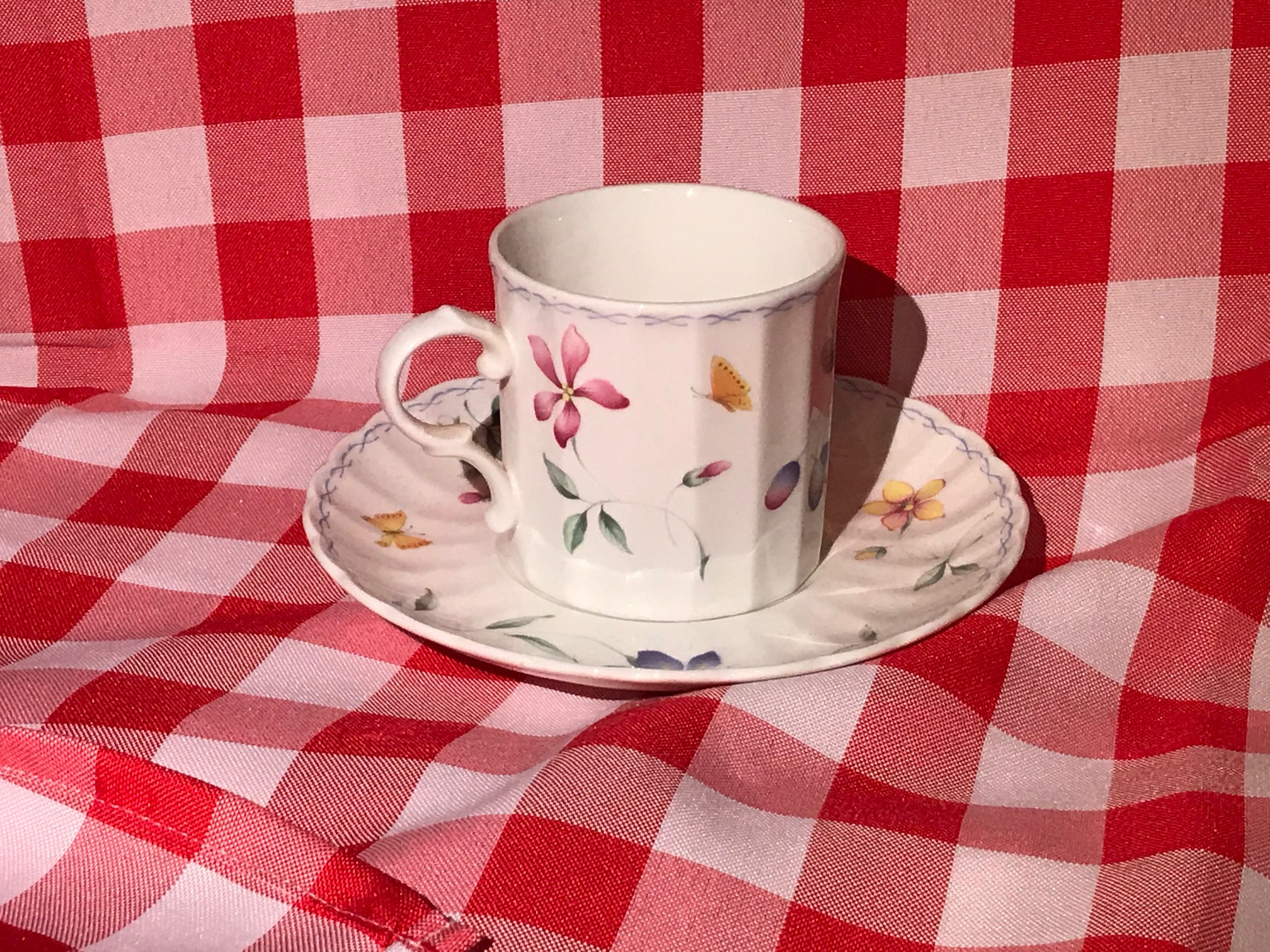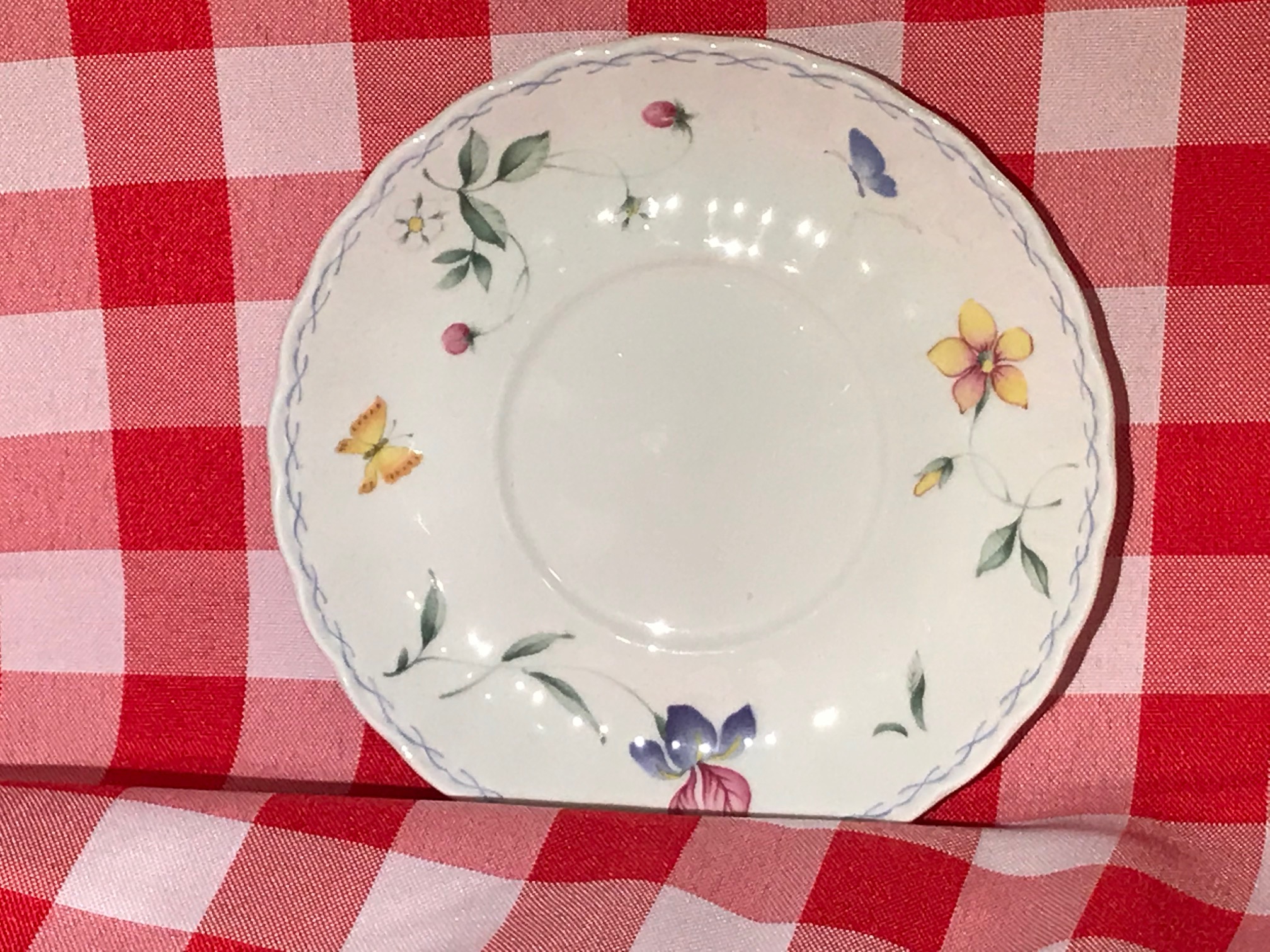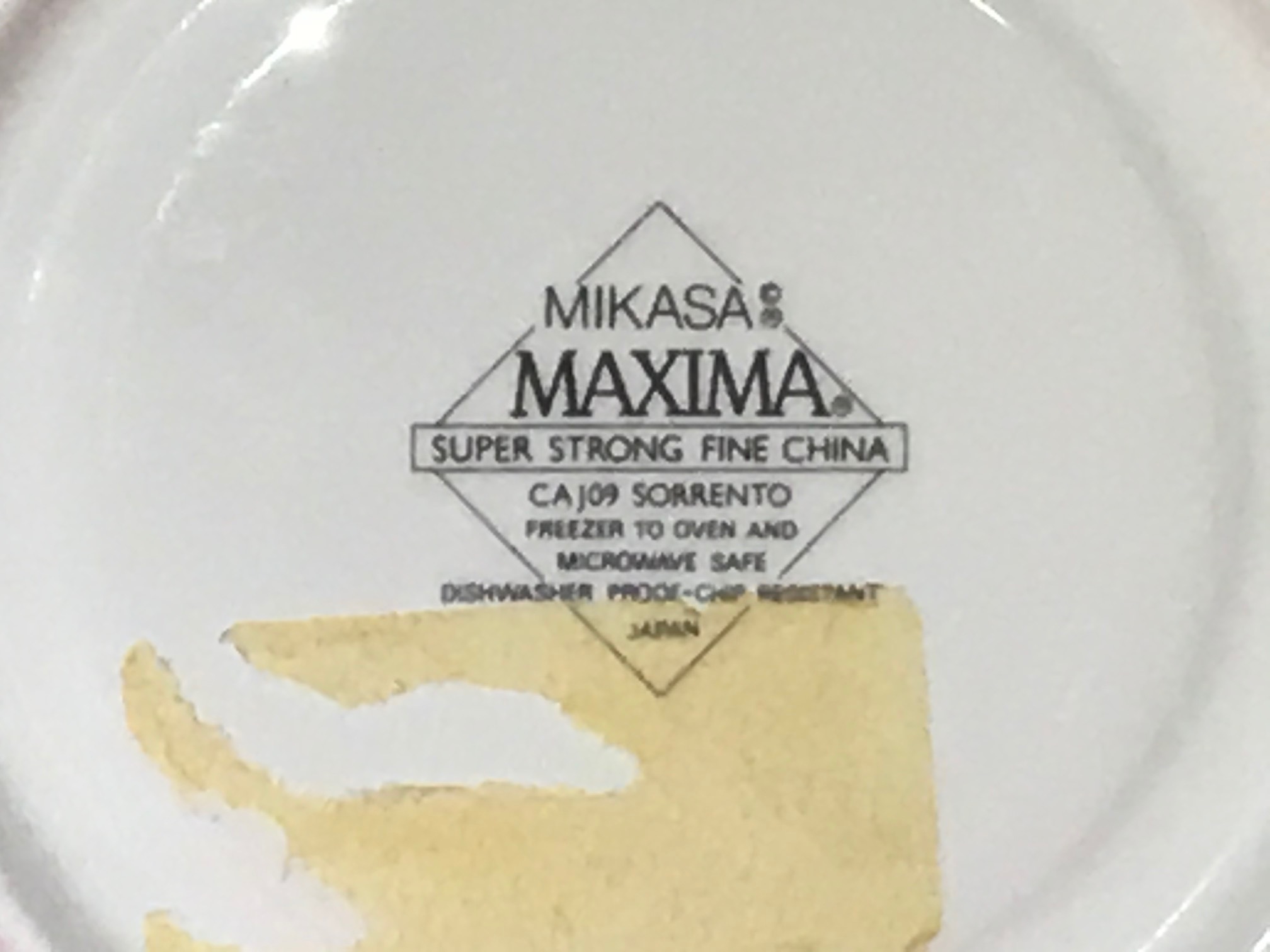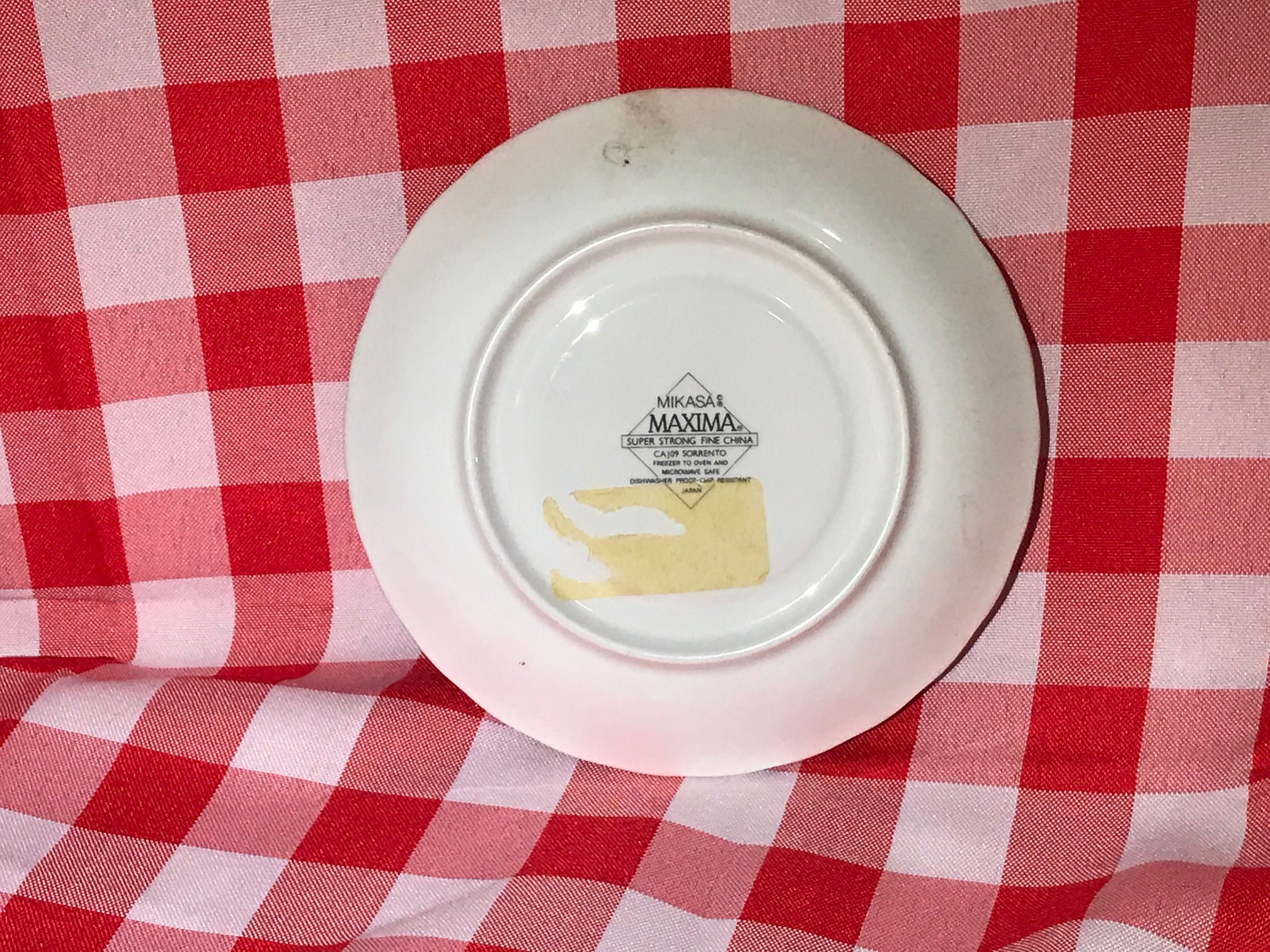Mikasa Maxima Sorrento pattern cup and saucer: 21,200 ppm Lead (90 is unsafe for kids) + 167 pm Cadmium.

White center of plate
- Lead (Pb): 69 +/- 15 ppm
- Barium (Ba): 383 +/- 56 ppm
- Zinc (Zn): 32,500 +/- 800 ppm
- Copper (Cu): 79+/- 38 ppm
- Iron (Fe): 461 +/- 123 ppm
- Vanadium (V): 1,046 +/- 225 ppm
- Titanium (Ti): 2,820 +/- 414 ppm
- Zirconium (Zr): 1,565 +/- 50 ppm
Floral area – blue and red:
- Lead (Pb): 18,900 +/- 500 ppm
-
Cadmium (Cd): 167 +/- 17 ppm
-
Barium (Ba): 476 +/- 78 ppm
-
Tin (Sn): 199 +/- 26 ppm
-
Zinc (Zn): 23,800 +/- 700 ppm
-
Zirconium (Zr): 1,735 +/- 69 ppm
-
Platinum (Pt): 357 +/- 155 ppm
-
Cobalt (Co): 1,599 +/- 162 ppm
Floral area – yellow:
- Lead (Pb): 21,200 +/- 600 ppm
-
Cadmium (Cd): 99 +/- 14 ppmBarium (Ba): 489 +/- 77 ppmAntimony (Sb): 77 +/- 27 ppmTin (Sn): 264 +/- 27 ppmZinc (Zn): 24,900 +/- 700 ppmIron (Fe): 453 +/- 143 ppmZirconium (Zr): 1,782 +/- 69 ppmPlatinum (Pt): 315 +/- 152 ppm
How much Lead is too much Lead?
The amount of Lead that is considered unsafe and illegal in a modern / newly manufactured item made and sold for use by children today is anything 90 ppm Lead or higher in the paint / glaze or coating and anything 100 ppm Lead or higher in the substrate. Dishes are not covered by this regulatory standard as they are not considered to be “an item intended for use by children” (however it is my professional opinion that they should be because children also use dishes!)
Some additional reading:
- To read more about the concern for Lead in pottery and dishware, click here.
- To see more items from the Mikasa that I have tested, click here.
- To see more floral pattern ceramic dishes I have tested, click here (most are high Lead!)
- To read more about the type of testing I do, click here.
As always, please let me know if you have any questions. Thank you for reading and sharing my posts.
Tamara Rubin
#LeadSafeMama


Never Miss an Important Article Again!
Join our Email List





If lead was banned from china in 1971, then, other than outright fraud, how is lead appearing in china glazes from the 1980s (such as Sorrento)?
It wasn’t truly banned unfortunately- it was limited – with some relatively arbitrary restrictions that don’t protect the user over the life of the product.
Thanks for responding! Do you have a link to a single location that details the so-called lead ban from 1971? I thought all dishes made after that date would be lead-free; clearly not. Do you trust the testing swabs for those of us who don’t have a calibrated machine? Thanks for all you do.